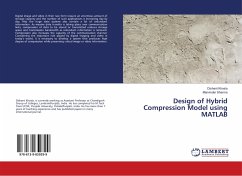
The Heart Considered as a ¿V-pump: a Bond Graph Model
Versandkostenfrei!
Versandfertig in 6-10 Tagen
32,99 €
inkl. MwSt.

PAYBACK Punkte
16 °P sammeln!
To understand how the heart carries out its pumping function is a real challenge and it involves multi-disciplinary knowledge. In 1986, Lundbäck suggested that the heart behaves as a piston pump (called DeltaV-pump) with a unique piston shape; this particular design creates pressure gradients that cause the hydraulic return of the piston. The DeltaV-pump combines characteristic from both positive displacement and dynamic pumps. A physical model can be a precious aid for understanding and predicting the dynamics of a complex system, therefore the aim of this thesis work is to suggest and devel...
To understand how the heart carries out its pumping function is a real challenge and it involves multi-disciplinary knowledge. In 1986, Lundbäck suggested that the heart behaves as a piston pump (called DeltaV-pump) with a unique piston shape; this particular design creates pressure gradients that cause the hydraulic return of the piston. The DeltaV-pump combines characteristic from both positive displacement and dynamic pumps. A physical model can be a precious aid for understanding and predicting the dynamics of a complex system, therefore the aim of this thesis work is to suggest and develop a physical model of the hydraulic behavior of the heart based on the V-pump. Due to its domain-independent representation, the bond graph formalism is chosen for the physical model description. The model is implemented and simulated in Dymola, a software platform based on the object-oriented programming language Modelica.Fusion of knowledge from different areas, such as engineering, physiology and computer science, helped to reach the aim.












